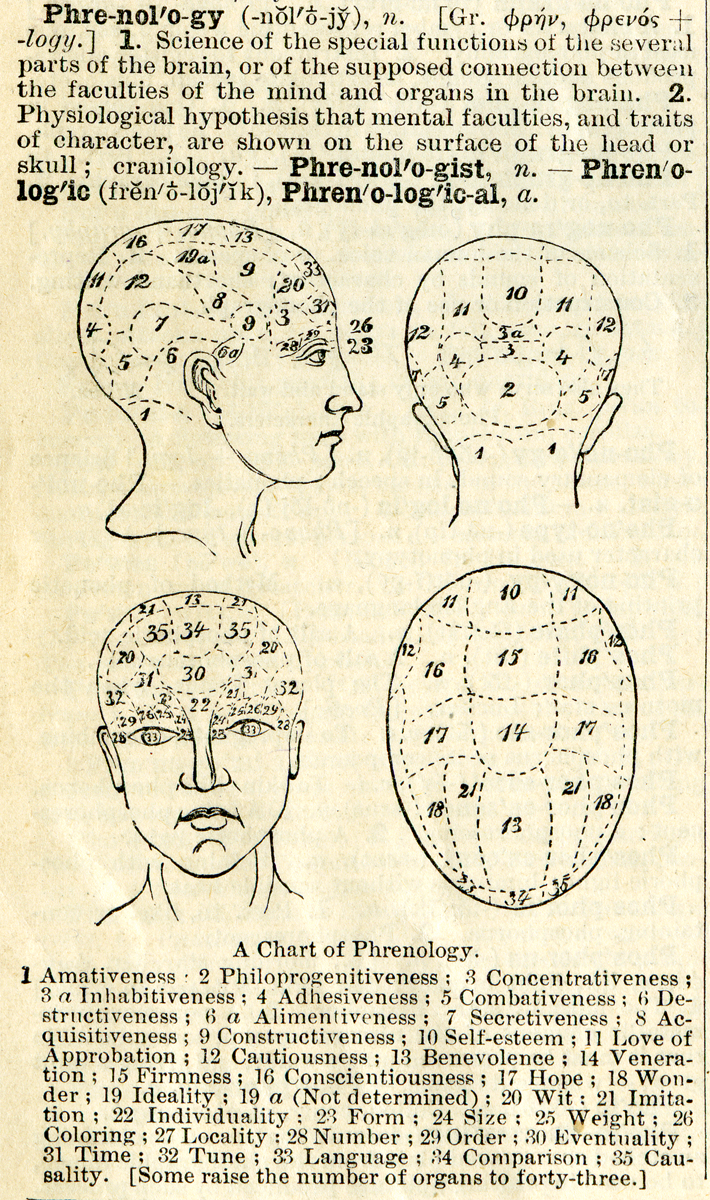|
Psychological Testing
Psychological testing is the administration of psychological tests. Psychological tests are administered by trained evaluators. A person's responses are evaluated according to carefully prescribed guidelines. Scores are thought to reflect individual or group differences in the construct the test purports to measure. The science behind psychological testing is psychometrics. Psychological tests According to Anastasi and Urbina, psychological tests involve observations made on a "carefully chosen ''sample'' mphasis authorsof an individual's behavior." A psychological test is often designed to measure unobserved constructs, also known as latent variables. Psychological tests can include a series of tasks or problems that the respondent has to solve. Psychological tests can include questionnaires and interviews, which are also designed to measure unobserved constructs. Questionnaire- and interview-based scales typically differ from psychoeducational tests, which ask for a respond ... [...More Info...] [...Related Items...] OR: [Wikipedia] [Google] [Baidu] |
Psychometrics
Psychometrics is a field of study within psychology concerned with the theory and technique of measurement. Psychometrics generally refers to specialized fields within psychology and education devoted to testing, measurement, assessment, and related activities. Psychometrics is concerned with the objective measurement of latent constructs that cannot be directly observed. Examples of latent constructs include intelligence, introversion, mental disorders, and educational achievement. The levels of individuals on nonobservable latent variables are inferred through mathematical modeling based on what is observed from individuals' responses to items on tests and scales. Practitioners are described as psychometricians, although not all who engage in psychometric research go by this title. Psychometricians usually possess specific qualifications such as degrees or certifications, and most are psychologists with advanced graduate training in psychometrics and measurement the ... [...More Info...] [...Related Items...] OR: [Wikipedia] [Google] [Baidu] |
Francis Galton
Sir Francis Galton, FRS FRAI (; 16 February 1822 – 17 January 1911), was an English Victorian era polymath: a statistician, sociologist, psychologist, anthropologist, tropical explorer, geographer, inventor, meteorologist, proto- geneticist, psychometrician and a proponent of social Darwinism, eugenics, and scientific racism. He was knighted in 1909. Galton produced over 340 papers and books. He also created the statistical concept of correlation and widely promoted regression toward the mean. He was the first to apply statistical methods to the study of human differences and inheritance of intelligence, and introduced the use of questionnaires and Statistical survey, surveys for collecting data on human communities, which he needed for genealogical and biographical works and for his anthropometrics, anthropometric studies. He was a pioneer of eugenics, coining the term itself in 1883, and also coined the phrase "nature versus nurture". His book ''Hereditary ... [...More Info...] [...Related Items...] OR: [Wikipedia] [Google] [Baidu] |
Personality
Personality is the characteristic sets of behaviors, cognitions, and emotional patterns that are formed from biological and environmental factors, and which change over time. While there is no generally agreed-upon definition of personality, most theories focus on motivation and psychological interactions with the environment one is surrounded by. Trait-based personality theories, such as those defined by Raymond Cattell, define personality as traits that predict an individual's behavior. On the other hand, more behaviorally-based approaches define personality through learning and habits. Nevertheless, most theories view personality as relatively stable. The study of the psychology of personality, called personality psychology, attempts to explain the tendencies that underlie differences in behavior. Psychologists have taken many different approaches to the study of personality, including biological, cognitive, learning, and trait-based theories, as well as psychodynamic, and h ... [...More Info...] [...Related Items...] OR: [Wikipedia] [Google] [Baidu] |
Aptitude
An aptitude is a component of a competence to do a certain kind of work at a certain level. Outstanding aptitude can be considered "talent". Aptitude is inborn potential to perform certain kinds of activities, whether physical or mental, and whether developed or undeveloped. Aptitude is often contrasted with skills and abilities, which are developed through learning. The mass term ability refers to components of competence acquired through a combination of both aptitude and skills. According to Gladwell (2008) and Colvin (2008), it is often difficult to set apart the influence of talent from the influence of hard training in the case of outstanding performances. Howe, Davidson, and Sloboda argue that talents are acquired rather than innate. Talented individuals generally show high levels of competence immediately in only a narrow range of activities, often comprising only a single direction or genre. Intelligence and aptitude Aptitude and IQ are different but related con ... [...More Info...] [...Related Items...] OR: [Wikipedia] [Google] [Baidu] |
Cognitive Ability
Cognitive skills, also called cognitive functions, cognitive abilities or cognitive capacities, are brain-based skills which are needed in acquisition of knowledge, manipulation of information and reasoning. They have more to do with the mechanisms of how people learn, remember, solve problems and pay attention, rather than with actual knowledge. Cognitive skills or functions encompass the domains of perception, attention, memory, learning, decision making, and language abilities. Specialisation of functions Cognitive science has provided theories of how the brain works, and these have been of great interest to researchers who work in the empirical fields of brain science. A fundamental question is whether cognitive functions, for example visual processing and language, are autonomous modules, or to what extent the functions depend on each other. Research evidence points towards a middle position, and it is now generally accepted that there is ''a degree'' of modularity in aspe ... [...More Info...] [...Related Items...] OR: [Wikipedia] [Google] [Baidu] |
Psychological Construct
In philosophy, a construct is an object which is ''ideal'', that is, an object of the mind or of thought, meaning that its existence may be said to depend upon a subject's mind. This contrasts with any possibly ''mind-independent'' objects, the existence of which purportedly does not depend on the existence of a conscious observing subject. Thus, the distinction between these two terms may be compared to that between phenomenon and noumenon in other philosophical contexts and to many of the typical definitions of the terms realism and idealism also. In the correspondence theory of truth, ideas, such as constructs, are to be judged and checked according to how well they correspond with their referents, often conceived as part of a ''mind-independent'' reality. Overview As mind-dependent objects, concepts that are typically viewed as constructs include the abstract objects designated by such symbols as 3 or 4, or words such as liberty or cold as they are seen as a result of i ... [...More Info...] [...Related Items...] OR: [Wikipedia] [Google] [Baidu] |
World War I
World War I (28 July 1914 11 November 1918), often abbreviated as WWI, was List of wars and anthropogenic disasters by death toll, one of the deadliest global conflicts in history. Belligerents included much of Europe, the Russian Empire, the United States, and the Ottoman Empire, with fighting occurring throughout Europe, the Middle East, Africa, the Pacific Ocean, Pacific, and parts of Asia. An estimated 9 million soldiers were killed in combat, plus another 23 million wounded, while 5 million civilians died as a result of military action, hunger, and disease. Millions more died in Genocides in history (World War I through World War II), genocides within the Ottoman Empire and in the Spanish flu, 1918 influenza pandemic, which was exacerbated by the movement of combatants during the war. Prior to 1914, the European great powers were divided between the Triple Entente (comprising French Third Republic, France, Russia, and British Empire, Britain) and the Triple A ... [...More Info...] [...Related Items...] OR: [Wikipedia] [Google] [Baidu] |
Self-report Inventory
A self-report inventory is a type of psychological test in which a person fills out a survey or questionnaire with or without the help of an investigator. Self-report inventories often ask direct questions about personal interests, values, symptoms, behaviors, and traits or personality types. Inventories are different from tests in that there is no objectively correct answer; responses are based on opinions and subjective perceptions. Most self-report inventories are brief and can be taken or administered within five to 15 minutes, although some, such as the Minnesota Multiphasic Personality Inventory (MMPI), can take several hours to fully complete. They are popular because they can be inexpensive to give and to score, and their scores can often show good reliability. There are three major approaches to developing self-report inventories: theory-guided, factor analysis, and criterion-keyed. Theory-guided inventories are constructed around a theory of personality or a prototype ... [...More Info...] [...Related Items...] OR: [Wikipedia] [Google] [Baidu] |
Physiognomy
Physiognomy (from the Greek , , meaning "nature", and , meaning "judge" or "interpreter") is the practice of assessing a person's character or personality from their outer appearance—especially the face. The term can also refer to the general appearance of a person, object, or terrain without reference to its implied characteristics—as in the physiognomy of an individual plant (see plant life-form) or of a plant community (see vegetation). Physiognomy as a practice meets the contemporary definition of pseudoscience and it is so regarded among academic circles because of its unsupported claims; popular belief in the practice of physiognomy is nonetheless still widespread. The practice was well-accepted by ancient Greek philosophers, but fell into disrepute in the Middle Ages while practised by vagabonds and mountebanks. It revived and was popularised by Johann Kaspar Lavater, before falling from favor in the late 19th century. [...More Info...] [...Related Items...] OR: [Wikipedia] [Google] [Baidu] |
Phrenology
Phrenology () is a pseudoscience which involves the measurement of bumps on the skull to predict mental traits.Wihe, J. V. (2002). "Science and Pseudoscience: A Primer in Critical Thinking." In ''Encyclopedia of Pseudoscience'', pp. 195–203. California: Skeptics Society.Hines, T. (2002). ''Pseudoscience and the Paranormal''. New York: Prometheus Books. p. 200 It is based on the concept that the brain is the organ of the mind, and that certain brain areas have localized, specific functions or modules. It was said that the brain was composed of different muscles, so those that were used more often were bigger, resulting in the different skull shapes. This led to the reasoning behind why everyone had bumps on the skull in different locations. The brain "muscles" not being used as frequently remained small and were therefore not present on the exterior of the skull. Although both of those ideas have a basis in reality, phrenology generalized beyond empirical knowledge in a way that ... [...More Info...] [...Related Items...] OR: [Wikipedia] [Google] [Baidu] |
Personality Testing
A personality test is a method of assessing human personality constructs. Most personality assessment instruments (despite being loosely referred to as "personality tests") are in fact introspective (i.e., subjective) self-report questionnaire (Q-data, in terms of LOTS data) measures or reports from life records (L-data) such as rating scales. Attempts to construct actual performance tests of personality have been very limited even though Raymond Cattell with his colleague Frank Warburton compiled a list of over 2000 separate objective tests that could be used in constructing objective personality tests. One exception however, was the Objective-Analytic Test Battery, a performance test designed to quantitatively measure 10 factor-analytically discerned personality trait dimensions. A major problem with both L-data and Q-data methods is that because of item transparency, rating scales and self-report questionnaires are highly susceptible to motivational and response distortion ran ... [...More Info...] [...Related Items...] OR: [Wikipedia] [Google] [Baidu] |



